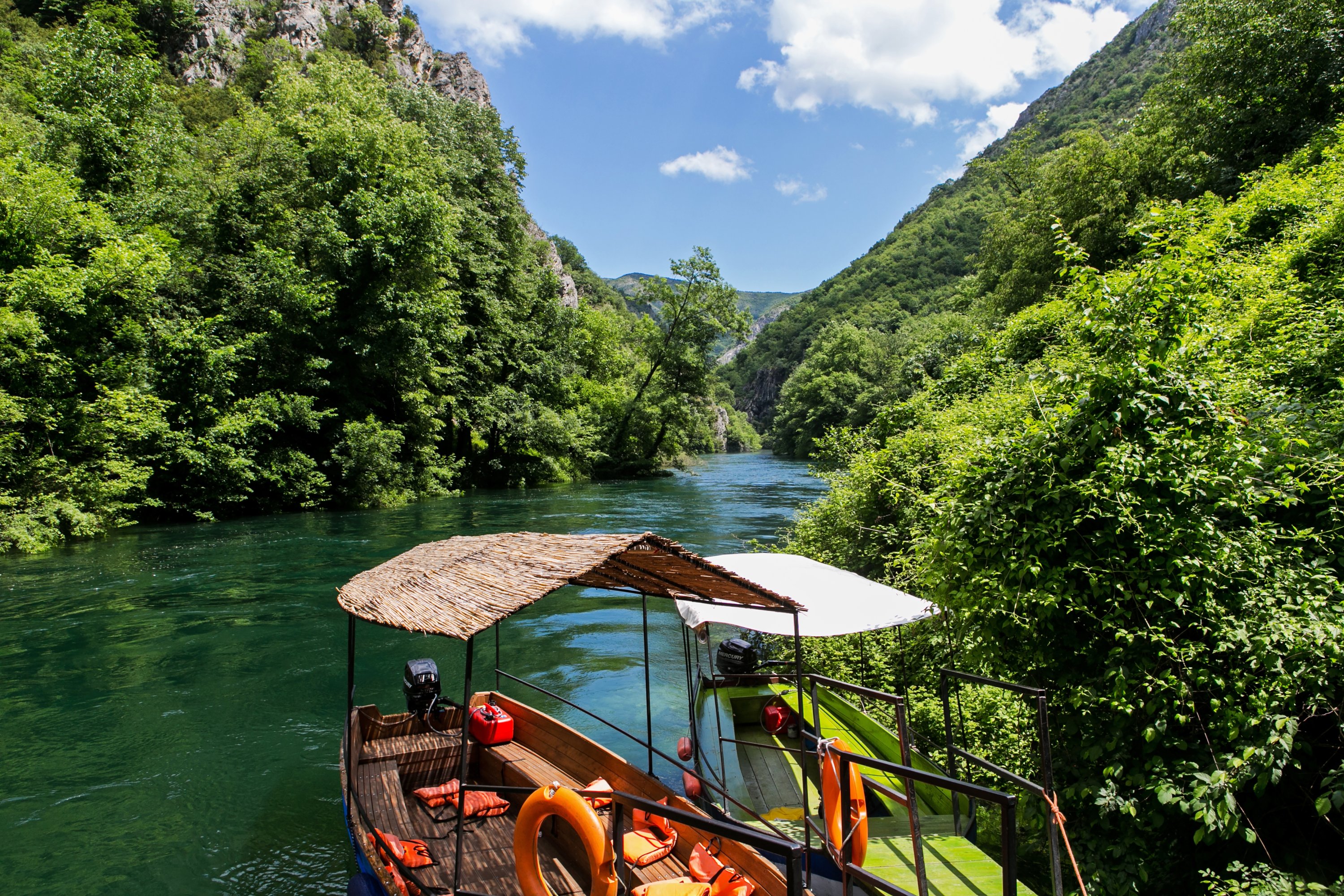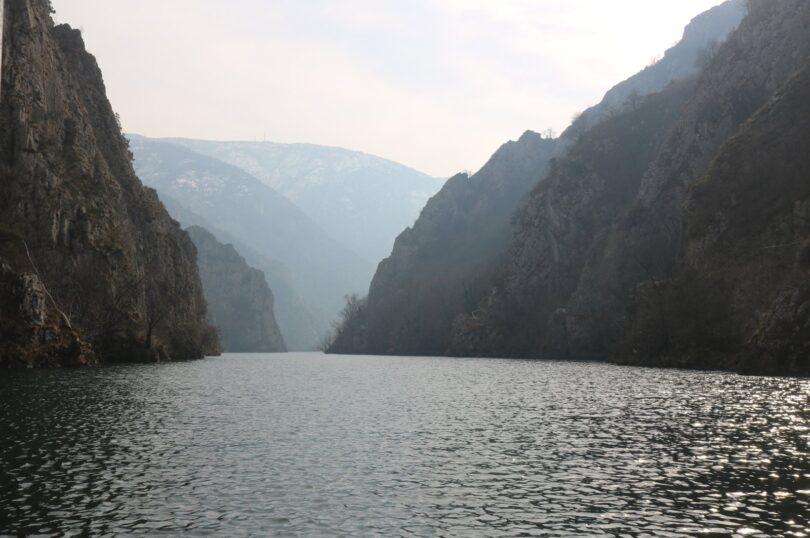Özge Şengelen
The hidden paradise of the Balkans, Matka Canyon, with its dazzling beauty, allows visitors to harmonize with nature while offering a mystical environment with its historical structures dating back to the Middle Ages
Skopje is a must-see for Balkan travel. The capital of North Macedonia fascinates you with its famous sculptures and historical texture while opening the doors of a hidden paradise for you with its natural beauty. One of these hidden paradises, Matka Canyon is a natural wonder that you must see if you ever visit Skopje.
I can’t help but admire Matka Canyon, located at the confluence of the Treska and Vardar Rivers, 15 kilometers (9.3 miles) southwest of Skopje. This place, which I looked at in photos and videos before visiting and still was almost fascinated by it when I saw it in reality, has a mystical, natural and historical atmosphere.
Here, away from the crowds, I can say that I handed myself over to nature, purified and found peace. Of course, the biggest factor in experiencing this feeling was that we came to the canyon early in the morning. No matter what season you go, remember that there may be many people who want to explore this hidden paradise beside you. Although the canyon is spread over an area of 500,000 hectares, it may not give you the feeling you expect if it is overflowing with visitors, as the walking paths and areas are narrow due to natural conditions.
I do not want to overshadow this magnificent beauty by prolonging this small detail.
This hidden paradise, which fascinates me and hosts a thousand and one shades of green, is about an hour away from Skopje. Transportation to the spot is very easy. If you wish, you can come by public transport or by taxi. There are also half-day tours in Skopje that include a trip to Matka Canyon and Mount Vodno.
If you want to go to the canyon by public transport, you need to take bus number 60 from Skopje, but you should definitely check the return times because the buses do not run frequently. When you come by bus, the bus drops you off far from the canyon and you have to walk quite a bit to reach your destination. Perhaps the best option for reaching the canyon is to rent a car, take a taxi or come on a tour.

Since we came from Istanbul by car, we reached the canyon in our own vehicle. There is a place where you can park your car at the entrance. After parking here, you reach your destination by following the walking path. First, you see the Matka Dam, which was built in 1935. Then you see Matka Lake, which is artificial but fused with nature. I can say that as I walked along the path, I felt that I breathed in every tone of green with every breath I took. I stopped every two steps and took photos and videos. Now I look at those photos and videos and just imagine that I’m breathing there and I relax.
Meanwhile, I kept telling my husband I wanted to stay here for one night. After a short walk, we came to Canyon Matka Hotel, which is the only hotel here. We sat for a while in the cafe of the hotel, which is also a restaurant, to take in the view. We could sit for hours in this cafe, which feels like sitting on a balcony above the lake, but what to do in Matka was not limited to this.
After spending a pleasant night in the hotel, we decided that we needed to get up to explore the canyons, caves that were formed millions of years ago and also the monasteries.
Taking a boat tour on the Treska River in Matka is one of the most popular activities here. You can also rent a canoe as an alternative to the boat.
The boat tour cruises over emerald green waters accompanied by the sound of nature and is very good for your soul. Europe’s deepest underwater cave, Cave Vrelo, is also located here. While some of the boat tours in the canyon take a short tour of the lake, some also stop by Vrelo Cave.
Vrelo Cave is just one of 10 caves in the canyon. The entrance of the cave is located close to the dam. Discovered by Mark Vandermeulen in 2007, the cave was nominated for the Seven Wonders of the World Project. Several attempts were made to measure the depth and length of the cave, but could not proceed due to the rock piles blocking the paths. Therefore, there is no definitive information about the length of Cave Vrelo yet.
The cave, which has very steep ups and downs, offers you a very adventurous excursion experience. The cave, which contains stalactites and stalagmites formed millions of years ago in all its glory, and two lakes is quite humid and cool, and if you are planning to explore it, be sure to bring appropriate clothing with you.
Matka Canyon is not only remarkable geologically but also impressed us in terms of its biological diversity. The canyon, which takes its name from the Macedonian word matka, which symbolizes biological diversity, does justice to its name. Home to 77 butterfly and five scorpion species, large bat populations and different plant species, the canyon also contains numerous other species, 20% of which are known to be endemic.
Apart from the caves, Matka Canyon also hosts many historical monasteries and churches that add a mystical atmosphere to this place. Built in 1380, Saint Andrew’s Church is one of them. The church, which is located right on the shore of the lake, has the distinction of being the only cross-shaped church in the country. While the canyon served as a kind of shelter because it hosted Christians fleeing the Ottomans for many years, after a while with the tolerant attitude of the Ottomans towards Christianity, it was later used as a retreat center.
The other historical structures you can see here include Saint Nikola Sisevsky, Saint Nedela, Saint Troica and the Saint Michael monasteries.
Courtesy: Dailysabah







